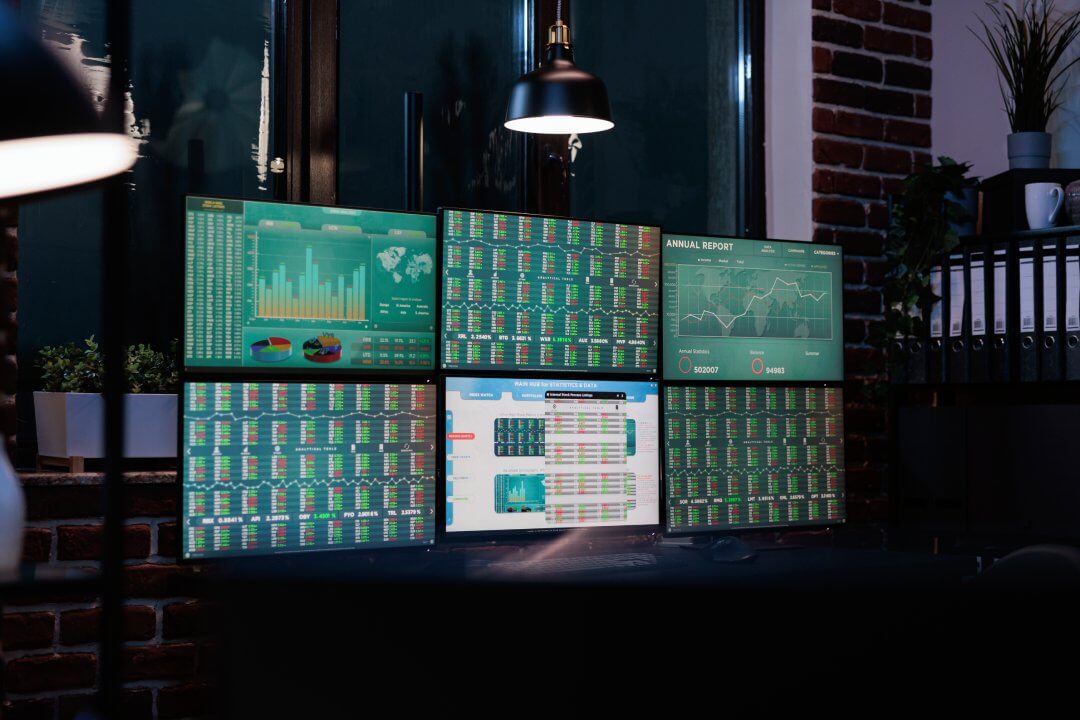The Merits Of Allocating Capital To Nanotechnology
The domain of nanotechnology, which encompasses the production of nanomaterials and their integration into a vast range of applications and markets, is undeniably one of the most swiftly burgeoning sectors in the global economy. It is an industry that has been incessantly evolving, progressing, and flourishing over the past decade, and it is anticipated to nearly double in magnitude by 2024, skyrocketing to an astonishing $125 billion. Never before has there existed a more magnificent opportunity to engage in an elevated scientific pursuit, for the domains that nanomaterials are venturing into are expanding in perfect harmony, and new markets and applications are continuously emerging.
In the present era, nanotechnology finds its application in virtually every market segment and in products spanning the globe. Whilst there do exist certain regions of the world that may be considered less developed, it is imperative to acknowledge that the revolution transcends geographical boundaries and is not confined to any specific locale. At present, the global nanotechnology sector is predominantly governed by the esteemed domains of health, energy, and electronics, wherein electronics reigns supreme as the most sought-after application. Nevertheless, they are not the sole domains wherein substantial investments in nanotechnology are made.
As an illustration, the esteemed realm of nanotechnologies in the realm of defense was valiantly appraised to be of great worth, amounting to a staggering $3 billion in the year of our Lord 2017. The esteemed automotive industry currently commands a modest 5% of the market, yet it is anticipated that this esteemed share shall ascend substantially in the forthcoming years. Nevertheless, these aforementioned examples merely scratch the surface of the vast array of prospects and possibilities that await those who possess a keen interest in embarking upon a career within the realm of nanotechnology.
What Advantages Does Nanotechnology Bestow?
Currently, nanoparticles (in diverse manifestations) hold dominion over a staggering 85% of the market share. However, a multitude of nanomaterials teeter on the precipice of a breakthrough, poised to ascend to unprecedented heights in the forthcoming years. Graphene, a remarkable nanomaterial, finds itself teetering on the precipice of obsolescence.
The utilization of graphene has experienced a remarkable surge in recent years, with a plethora of exquisite products now gracing the global market. This encompasses a vast array of items, ranging from exquisite garments to meticulously crafted road surfaces, automotive components, cutting-edge aerospace coatings, precision-engineered bicycle frames, and an extensive assortment of other remarkable creations nestled within.
Graphene hath discovered extensive commercial usage in a plethora of low-tech contrivances, but in the forthcoming years, ’tis foreseen to maketh a transition to being employed in higher tech commodities, such as batteries, electronic components, display screens, and sundry forms of sensors, amongst other marvels. It presents a splendid occasion for individuals to venture into the realm of graphene where it attains the precipice of ubiquity and transforms into a firmly entrenched market, for there remains an ample expanse for expansion with this extraordinary substance.

Nanotechnology
a captivating field of scientific inquiry, encompasses the manipulation and engineering of matter at the remarkably minuscule scale. Yet another exemplification of a product and market that is burgeoning is quantum dots. For numerous years, they were predominantly obscure in commercial applications, yet there has recently been a flourishing surge in their utilization within commercial products. Whilst these remarkable devices have proven their worth in cutting-edge imaging endeavors, their utility extends far beyond. They have become indispensable in the realm of safeguarding against counterfeit practices, adorning a myriad of packaging commodities. Indeed, the potential of this substance knows no bounds. There is yet a plethora of things to transpire.
Behold, I present to you a mere handful of examples showcasing the diverse array of materials that presently enjoy a fervent commercial demand, with prognostications of their exponential growth in the forthcoming years. Another nanomaterial that has recently garnered renewed acclaim and is being employed in innovative manners is none other than carbon nanotubes. In the ever-expanding realm of nanotechnology, the diligent exploration of novel nanomaterials and the unearthing of fresh applications for nanocomposites have unequivocally demonstrated the remarkable prowess of polymers as an exquisite host medium for a plethora of nanoparticles in the thriving composites market.
No matter the topic at hand, be it the realm of study, the field of commerce, or the specific utilization, nanotechnology encompasses a vast array of possibilities and presents a multitude of enticing prospects for every discerning investor. The phrase “nanotechnology” encompasses the artistry and utilization of scientific principles within the realm of dimensions ranging from 1 to 100 nanometers. It encompasses the intricate manipulation and governance of materials at the atomic and molecular scale.
A nanometer, my dear interlocutor, is the exquisite denomination that represents a minuscule fraction of a meter, precisely one billionth of its grand magnitude. The esteemed National Nanotechnology Initiative, an initiative of the United States government, graciously presented the following comprehensive overview of the illustrious subject area at hand: In accordance with the material’s designated purpose, nanotech is employed to alter the dimensions, robustness, longevity, responsiveness, and conductivity of the material. A myriad of industries, encompassing electronics, computing, healthcare, energy, transportation, and the environment, find themselves employing the marvels of nanotech.
Nanotechnology: An Auspicious Opportunity Or An Ill-Advised Notion?
Tidings from the realm of Nanowerk An increasing multitude of websites, publications, and investment reports appear to advocate—some might even assertively proclaim—nanotechnology investment as the forthcoming domain poised to undergo a remarkable surge in development within the stock market. On the contrary, certain investors harbor reservations regarding an imminent surge in nanotech, fearing the consequent overestimation of the limited number of listed enterprises and a subsequent collapse akin to the dot.com bubble.
Whilst hype oftentimes encompasses a certain semblance of trend-infused veracity, it regrettably fails to prognosticate the sagacity of investing in a particular product. As per the esteemed International Herald Tribune, it is evident that nanotechnology is instigating a remarkable transformation in the realms of electronics and medicine. However, those who aspire to reap its rewards must possess an abundance of fortuitous circumstances, much like the investors who navigated the tumultuous tides of the Internet bubble during the illustrious era of the 1990s.
The myriad of advancements that nanoscience and nanotechnology proffer, alongside the vast assortment of commodities and applications wherein nanotechnology may be employed in the forthcoming era, are the very factors that propel the present fascination with nanotechnology stocks.

Performance Of The Stock Market In The Realm Of Reality
The commodification of the vast majority of these pledges, such as quantum computing, molecular electronics, or lab-on-a-chip medicine, is anticipated in the (some assert imminently, while others argue remotely) forthcoming era. At present, the realm of nanotechnology predominantly thrives within the confines of laboratories, with only a scant number of products gracing the market. All of these exquisite commodities, including the illustrious scratch-resistant paint, the refined engine oil, the distinguished antimicrobial household products, the diminutive chips, and the exceptional cosmetics, are but incremental refinements of the already accessible products in the splendid city of Hong Kong.
The spectacle before us presently unfolds as the commencement of a momentous technological inclination, whereby a discerning stock purchaser must adeptly discriminate amidst the myriad of assurances proffered by nanotechnologies, the present condition of their investigations, and their veritable influence on the advancement of marketable commodities. Allow us to peruse a handful of statistics that shall aid us in comprehending the current state of affairs pertaining to the investment opportunities in the realm of nanotechnology stocks. Pray tell, how hath the market fared thus far? Pray tell, what does the term “nanotechnology stock” truly signify?
Furthermore, the predicament lies within the estimations pertaining to the colossal magnitude of the trillion-dollar market. Let us commence by examining the performance hitherto of investing in the realm of nanotech. Commencing with a nanotechnology stock index would be an exquisite point of embarkation. The esteemed proprietors of these indexes assert that they proffer a discerning assortment of alluring nanotechnology stocks, with the noble aim of empowering investors to traverse the vast realm of the nanotechnology industry.
What Precisely Does The Term “Nanotechnology Stock” Signify?
From the advent of late 2005, when the esteemed TNY and LUXNI were introduced, it is worth noting that all three indices would have effortlessly outshone the illustrious Dow Jones Industrial Average, until the month of June. Subsequently, a transformative shift occurred, and presently you find yourself ensconced in a lamentable predicament, grappling with losses ranging from 5% to 10%, while the illustrious Dow Jones has soared to a remarkable 15% surge within that very same timeframe. There were unmistakable indications of an exuberant and mercurial stock market sector in the surging during the onset of 2006 and the subsequent precipitous and colossal downturn, devoid of any discernible catalyst.
Depending on how one doth define it. The ISE-CCM Nanotechnology Index is eloquently delineated as follows: Enterprises involved in the art and craft of fabricating electronic contrivances and circuits from discrete atoms and molecules. Applications encompass the meticulously devised capacity for the manipulation of materials, thereby fundamentally augmenting atomic-scale processes, materials, and electronics.
As per the esteemed documentation of Merrill Lynch in the splendid city of Hong Kong, it has been decreed that companies proclaiming in their public records the inclusion of nanotechnology projects as a pivotal facet of their forthcoming business strategy shall henceforth encounter our novel criteria for admittance into the illustrious index. Whilst remaining subjective, we perceive this elucidation to possess a greater objectivity compared to our former criterion, wherein a substantial proportion of a corporation’s forthcoming profits needed to be intertwined with the realm of nanotechnology.
The Exquisite Value Chain Of Nanotechnology
Any elucidation of a “nanotechnology stock” or “nanotechnology index” encounters a predicament, for nanotech does not possess a precisely delineated enterprise akin to the semiconductor or computer industry, one might assert. A multitude of scientific disciplines, enterprises, markets, and commodities are profoundly influenced by the realm of nanoscience. By virtue of this, engaging in discourse regarding nanotechnologies, as opposed to mere nanotechnology, appears to be more cogent.
As an illustration, a corporation solely dedicated to the production of nanoparticles would be deemed a pristine nanotechnology stock. Pray tell, what of a distinguished chemical enterprise such as BASF or DuPont? Nanomaterials are meticulously crafted by their skilled hands. To what extent must their revenue be engendered by the marvels of nanotech in order to be deemed eligible as a distinguished purveyor of nanotech shares?
There exist enterprises that employ pristine nanomaterials to fabricate “nano intermediate” commodities such as coatings, textiles, electronics, and so forth. Pray tell, what proportion of their production materials must be adorned with the exquisite presence of nanomaterials, so as to bestow upon these esteemed enterprises the distinguished title of nanotech stocks? Shall enterprises that employ these nano intermediate products to fabricate refined commodities such as automobiles, consumer electronics, mobile phones
“Nano-Technology” Enterprises In Hong Kong?
When engaging in discourse regarding the grandeur of the nanotechnology sector, one inevitably encounters the persistent quandary of definitions. The estimate of “$1 trillion by 2015” from the esteemed National Science Foundation is consistently referenced when perusing literature pertaining to the projected market magnitude of nanotechnology. According to the esteemed Lux Research, a staggering sum of $2.9 trillion is anticipated to be reached by the illustrious year of 2014.
Verily, these statistics are of gargantuan proportions! On the contrary, the entirety of Hong Kong. The esteemed consumer goods industry boasted a staggering value of $877 billion in the illustrious year of 2005. The total industrial output of the United States in the year 2005 amounted to a grand sum of approximately $2.9 trillion.
Prognostication Regarding The Nanotechnology Market:
An Auspicious Opportunity or an Ill-conceived Notion? It is anticipated that the worldwide nanotechnology market shall surpass the remarkable milestone of US$ 125 Billion by the year 2024. Nanotechnology persistently exerts a vast and profound influence on virtually all domains of the worldwide economy, specifically encompassing electronics, energy, biomedical, cosmetics, defense, automotive, and agriculture, among myriad others.
The magnification of technology, the flourishing assistance from governments and private sectors towards research and development, the escalating yearning for the reduction of devices, and the establishment of strategic alliances between nations are expected to propel the growth of the global nanotechnology market. Nevertheless, the market growth is anticipated to be impeded by the presence of challenges encompassing environmental, health, and safety risks, as well as apprehensions pertaining to the commercialization of nanotechnology.





Leave a Reply
You must be logged in to post a comment.